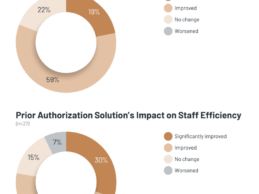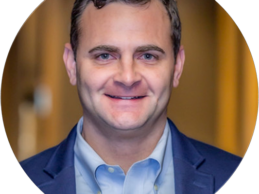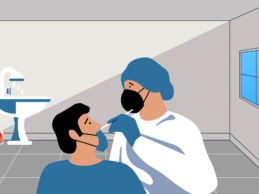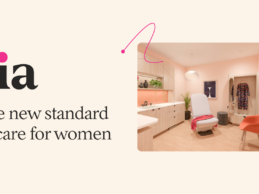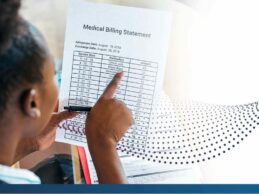What You Should Know:
- Prior authorization is mandated by payers to ensure that certain clinical procedures and medications being ordered are necessary. To alleviate the heavy administrative burden this requirement causes, healthcare organizations have adopted automated prior authorization solutions.
- For this report, KLAS interviewed 30 respondents from 26 unique organizations to understand their experiences using these solutions and what outcomes they have seen.
Understanding
Read More
Healthcare Leaders
RTLS Can Enhance the Patient Experience, Staff Safety, and Workflow Operations in 2023
Although the healthcare industry has shown significant resilience, the byproduct of the pandemic has amplified staff stressors across all operational and clinical roles. In a study conducted in 2022, more than one-third (34%) of the participating registered nurses (RN) stated that it was likely they would leave bedside nursing by the end of the year. Almost half (44%) cited both burnout and high-stress environments as their main reasons to retire or pursue other careers.
As staff
Read More
How Healthcare Organizations Can Enhance Patient Experience & Trust During the Winter Surge
It’s well known that the winter season typically creates spikes in illness and, consequently, a surge in healthcare visits. What might not be so obvious is that this time of increased demand is also the ideal opportunity for healthcare organizations to prioritize building trust and improving experiences for patients, clinicians and team members.
Just as science grows more sophisticated each year, allowing practitioners to better treat a greater number of medical ailments, so should
Read More
Patient Experience Impacted as More Healthcare Workers Consider Leaving Their Jobs
What You Should Know:
- Healthcare ranked last for employee satisfaction with pay compared to 27 other industries studied, according to the 2023 Healthcare Experience Trends Report from Qualtrics (Nasdaq: XM).
- The report also found that healthcare employees had lower scores than other industry employees across the core pillars of employee experience – engagement, intent-to-stay and employee experience vs. their expectation. Women reported lower scores than men across the domains.
Read More
Why Prioritizing Patient Experience Is Essential for Small Healthcare Practices
Rising inflation and a looming recession are causing small healthcare practices to tighten their belts and eliminate unnecessary costs. Still, too many healthcare leaders are divesting where it may end up hurting them in the long run: digital solutions.
Digitization and automation can be a lifeline for healthcare practices. Staffing shortages and tedious and time-consuming tasks plague small healthcare businesses, and customers are turning to more modern and accessible practices for
Read More
Tia and Cedars-Sinai Partner to Enhance Women’s Health
What You Should Know:
- Tia, the modern medical home for women, announced that it is teaming up with Cedars-Sinai, one of California’s leading health systems, to expand access to primary and specialty care for women across Los Angeles. Together, the two healthcare leaders will provide and enhance high-quality physical, mental and reproductive healthcare for more than 100,000 women throughout the Los Angeles region.
- The deal -- which includes opening multiple clinics throughout LA -- will
Read More
20 Executives Share Health IT Predictions to Watch in 2023
We asked several healthcare executives to share their health IT predictions and trends for 2023.
Nate Maslak, the co-founder/CEO of Ribbon Health
Data Personalization: 38% of consumers want more personalized and inclusive healthcare options. In 2023, we’ll see a greater shift towards healthcare enterprises prioritizing this personalization, by innovating their current data infrastructure to show a range of information that lets a patient make an educated care decision based on what
Read More
Healthcare Executives Are Burned Out; Here’s What to Do About It
What You Should Know:
- In the summer of 2022, WittKieffer emailed an online survey to thousands of healthcare C-suite executives of a range of titles at leading hospitals, health systems, academic medical centers, medical groups and other provider organizations. The survey asked questions about feelings of burnout in leaders’ lives and at work as well as the professional impact of the global pandemic.
- A total of 233 healthcare executives, including 63 CEOs, completed the survey. Of
Read More
Patient Financial Experience: 40% of Americans Confused by Medical Bills
What You Should Know:
- AKASA™, a developer of AI for healthcare operations, released findings from a new survey conducted on its behalf by YouGov.
- The survey findings highlight uncertainty looms among patients about what is included in a bill and if they can pay - two factors that drive the most confusion on medical bills. However, there are strategies healthcare organizations can take to be proactive and prevent billing surprises from trickling down to patients.
Understanding
Read More
Modernizing Data Access: 3 Tips for Securing Patient Data in the Cloud
There is a tremendous amount of data within the healthcare and life sciences industries. According to RBC Capital Markets, the healthcare sector accounts for 30% of the world’s data and is forecasted to grow by a compound annual growth rate of 36% in the next two and half years.
The benefit is that healthcare professionals, organizations, and analysts can use this data to improve the quality, quantity, and accessibility of healthcare. But it also carries great risk. More organizations
Read More

